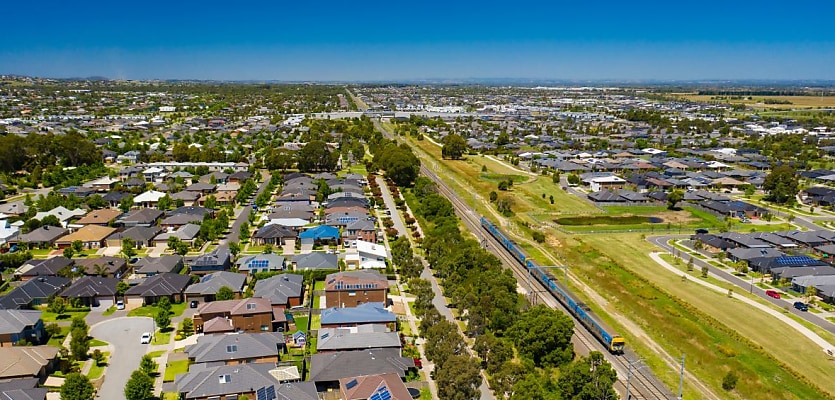Rents are rising sharply in Australia, with projections showing further increases, worsening the housing crisis for renters.
Rents in Australia are rising at rates not seen since the global financial crisis (GFC), with projections indicating further pain ahead for renters.
Rents have surged by 14.2 per cent over the past two years, more than double the overall inflation rate of 6.6 per cent, according to new analysis from Money.com.au. This includes a 7.3 per cent rise in 2023, followed by a further 6.4 per cent increase in 2024.
The 14.2 per cent figure reflects the compounding effect of consecutive annual increases.
The last time Australia experienced two consecutive years of rent growth above 6 per cent was during 2007 to 2008, when rent growth peaked at 8.4 per cent in 2008, coinciding with the height of the GFC.
Following that period, rent inflation outpaced general inflation for six years. Projections based on current trends suggest rents could rise another 18 per cent by 2030. Rental price inflation reflects the actual amount households pay landlords for rental housing.
Money.com.au’s property expert, Mansour Soltani, explained that while inflation is trending in the right direction for many Australians, renters are being left behind.
“The general rate of inflation is easing and back within the RBA’s target range, which is good news for home owners desperate for more rate relief.
“But rents, as they relate to overall inflation, keep rising at a faster rate, so there’s a growing divide between home owners who are likely to see another rate cut soon and lower mortgage repayments, and renters who will continue bearing the brunt of the housing crisis.
“The last time we saw rent rises like this was during the GFC, and back then, it took years for the market to stabilise. If that’s anything to go by, we could be in for a long stretch of above-average rent growth. With population growth, record-low vacancy rates in capital cities, and limited housing supply, it could take even longer this time around,” Soltani said.
The Australian Bureau of Statistics data also highlighted that rents in several capital cities have risen above the national average of 14.2 per cent over the past two years.
Perth saw a remarkable 19.9 per cent increase, followed by Brisbane with 15.8 per cent, and Sydney with 15.4 per cent. Melbourne recorded a 12.7 per cent rise, while Adelaide saw a 12.2 per cent increase.
Darwin experienced a 7.3 per cent rise, and Canberra had a modest increase of 3 per cent. Hobart was the only capital city to see a decline in rents at -1.5 per cent.
In response to rising rents, nearly half of renters are considering relocation to more affordable areas. A survey from Money.com.au revealed that 47 per cent of renters would move to a different suburb or city to find cheaper rent.
Over one in 10 (14 per cent) are currently looking to relocate to save money on rent, with Gen Z renters (17 per cent) and Gen X renters (15 per cent) being the most likely to seek cheaper housing.









You are not authorised to post comments.
Comments will undergo moderation before they get published.